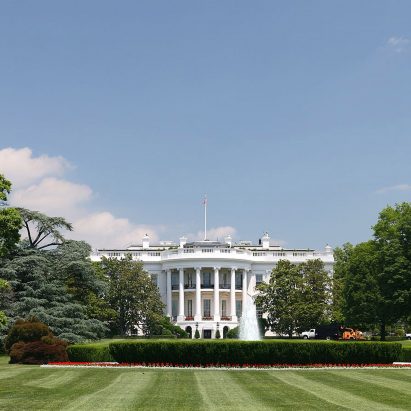Where things stand as Trump rolls out new tariff rates

WASHINGTON — President Donald Trump has imposed sweeping new tariffs on imports from more than 90 countries, escalating once again his administration’s trade offensive aimed at boosting domestic manufacturing and narrowing the trade deficit.
The tariffs, announced late July 31, follow the expiration of an Aug. 1 deadline Trump had given global partners to strike trade deals or face higher import duties.
With only eight new agreements reached over 120 days, and a possible agreement to extend a pause with China awaiting Trump’s nod, the White House moved forward with its largest round of tariffs to date.
See also:
- With new tariffs looming, Telescope Casual sees traffic surge in Atlanta
- XPO tops Q2 expectations with strong margin gains
The new rates take effect Aug. 7, with one exception: Canadian imports are immediately subject to a 35% tariff, up from 25%, although most are exempt under the United States-Mexico–Canada Agreement (USMCA).
The sweeping measures come as U.S. stock futures dipped and the July jobs report missed expectations, with unemployment rising to 4.2%. Analysts warn that importers may pass tariff costs to consumers, potentially fueling inflation and slowing growth, but carve outs related to the USMCA may blunt some of the more immediate impacts on consumers.
Although Canada’s rate increased, many goods remain exempt due to protections built into the USMCA. The agreement preserves tariff-free access for a wide range of industrial and raw materials essential to North American supply chains.
Covered products include: chemicals; steel and steel-intensive goods; textiles and apparel; raw materials such as copper, timber and energy-related inputs; and electronics and digital goods.
Goods made entirely from North American-sourced materials remain eligible for tariff-free treatment.
Separately, on July 30, Trump imposed new Section 232 tariffs on certain semi-finished and derivative copper products, effective Aug. 1. By Oct. 28, the Secretary of Commerce will establish a process to include additional copper derivatives within the scope of the tariffs, according to the administration.
China still a question mark
Negotiators from the U.S. and China have yet to extend a 90-day pause on tariffs, which was discussed on Tuesday during the latest round of talks held in Stockholm, Sweden.
U.S. Treasury Secretary Scott Bessent noted that Trump would have the final say on any renewal of the pause, which as of now is still set to expire on August 12. “Nothing is agreed until we speak with President Trump,” Bessent said at the time, calling the talks “very constructive.”
Transshipments and de minimis exemptions
On Thursday, Trump also imposed a 40% tariff on so-called transshipments, indirect imports routed through third countries. The new duties will apply globally, not just to Chinese goods, and will take effect in one week.
A senior administration official said the definition of indirect shipments could soon be expanded, further widening the tariff’s reach. While the policy is global, trade experts said China — due to its extensive manufacturing infrastructure and global export networks — is likely to be most affected.
On July 30, Trump signed an executive order suspending the de minimis exemption, which previously allowed duty-free treatment of low-value imports under $800. Starting Aug. 29, all non-postal shipments will be subject to full duties, tariffs, taxes and fees. Postal shipments will still be allowed under an interim structure, although they may soon lose that protection as well.
Postal packages will be charged based on carrier-selected methods:
- A tariff equal to the product’s applicable International Emergency Economic Powers Act (IEEPA) rate
- A flat fee, depending on the effective IEEPA tariff rate:
- $80 for countries under 16%
- $160 for countries between 16–25%
- $200 for countries above 25%
Carriers may only change methodologies once per month. The exception for postal shipments will be revoked once the Commerce Department certifies a system to fully process and collect duties.
Tariff breakdown
Newly announced U.S. tariff rates pertaining to countries where the furniture industry has major exposure, sorted by rate:
| Country | Share of U.S. Imports | New Tariff Rate |
| Brazil | 1.3% | 50% |
| Canada | 12.6% | 35% |
| China | 13.4% | 30% |
| Mexico | 15.5% | 25% |
| India | 2.7% | 25% |
| Vietnam | 4.2% | 20% |
| Taiwan | 3.6% | 20% |
| Indonesia | <1% | 19% |
| Thailand | 1.9% | 19% |
| Philippines | <1% | 19% |
| Myanmar | <1% | 40% |
| Germany | 4.9% | 15% |
| Japan | 4.5% | 15% |
| South Korea | 4.0% | 15% |
| Ireland | 3.2% | 15% |
| Italy | 2.3% | 15% |
| Bolivia | <1% | 15% |
| United Kingdom | 2.1% | 10% |
Source: White House and Commerce Dept data













































